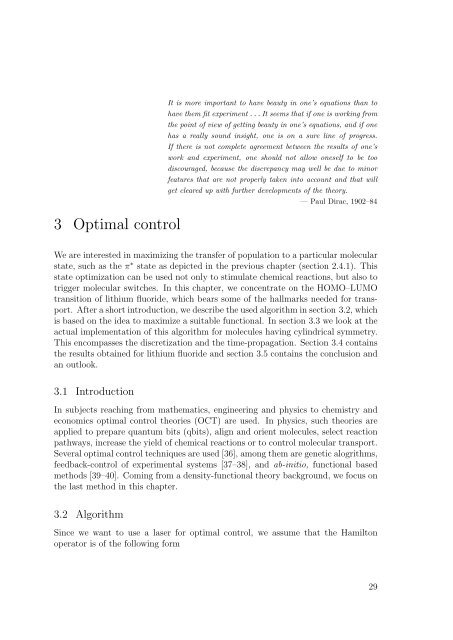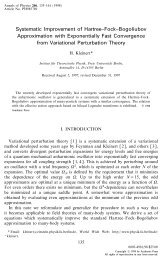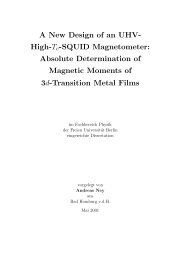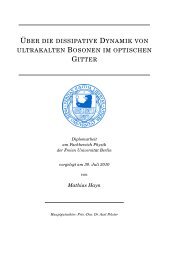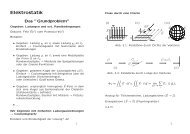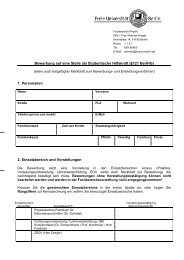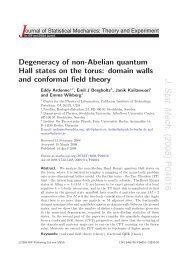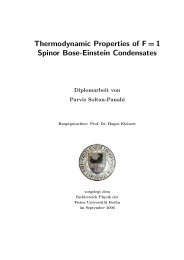Time-Dependent Electron Localization Function - Fachbereich ...
Time-Dependent Electron Localization Function - Fachbereich ...
Time-Dependent Electron Localization Function - Fachbereich ...
You also want an ePaper? Increase the reach of your titles
YUMPU automatically turns print PDFs into web optimized ePapers that Google loves.
3 Optimal control<br />
It is more important to have beauty in one’s equations than to<br />
have them fit experiment . . . It seems that if one is working from<br />
the point of view of getting beauty in one’s equations, and if one<br />
has a really sound insight, one is on a sure line of progress.<br />
If there is not complete agreement between the results of one’s<br />
work and experiment, one should not allow oneself to be too<br />
discouraged, because the discrepancy may well be due to minor<br />
features that are not properly taken into account and that will<br />
get cleared up with further developments of the theory.<br />
— Paul Dirac, 1902–84<br />
We are interested in maximizing the transfer of population to a particular molecular<br />
state, such as the π ∗ state as depicted in the previous chapter (section 2.4.1). This<br />
state optimization can be used not only to stimulate chemical reactions, but also to<br />
trigger molecular switches. In this chapter, we concentrate on the HOMO–LUMO<br />
transition of lithium fluoride, which bears some of the hallmarks needed for transport.<br />
After a short introduction, we describe the used algorithm in section 3.2, which<br />
is based on the idea to maximize a suitable functional. In section 3.3 we look at the<br />
actual implementation of this algorithm for molecules having cylindrical symmetry.<br />
This encompasses the discretization and the time-propagation. Section 3.4 contains<br />
the results obtained for lithium fluoride and section 3.5 contains the conclusion and<br />
an outlook.<br />
3.1 Introduction<br />
In subjects reaching from mathematics, engineering and physics to chemistry and<br />
economics optimal control theories (OCT) are used. In physics, such theories are<br />
applied to prepare quantum bits (qbits), align and orient molecules, select reaction<br />
pathways, increase the yield of chemical reactions or to control molecular transport.<br />
Several optimal control techniques are used [36], among them are genetic alogrithms,<br />
feedback-control of experimental systems [37–38], and ab-initio, functional based<br />
methods [39–40]. Coming from a density-functional theory background, we focus on<br />
the last method in this chapter.<br />
3.2 Algorithm<br />
Since we want to use a laser for optimal control, we assume that the Hamilton<br />
operator is of the following form<br />
29


